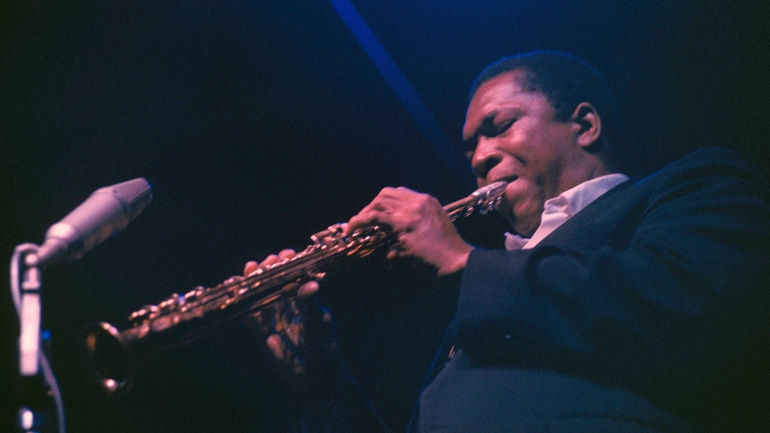
John Coltrane’s Ballads was viewed as something of an anomaly that came in the midst of the saxophonist’s turbulent creative development in the early sixties. Ben Ratliff calls it a “contrivance” between Coltrane and producer Bob Thiele in Coltrane: The Story of a Sound, then praises it as “one of the best ballad records in jazz.” Frank Kofsky, a proselytizer for the avant-garde, interviewed Trane in the mid-60’s and pointedly asked him if the motive behind Ballads and his recordings with Duke Ellington and Johnny Hartman was Coltrane’s or Thiele’s? Trane answered by discussing the mouthpiece and embouchure problems he was having in the fall of ’62, but later elaborated on the sessions. Thiele admitted to Kofsky that “the only pressure I brought to bear [on Coltrane] was the Ballads album.”

Ashley Kahn quotes Thiele in The House That Trane Built: “[These sessions] came about because of the critics. We decided to straighten these guys out once and for all by showing them that John was as complete a jazz artist as we already knew.” The jazz writer Ira Gitler, who’d famously hailed Coltrane’s late fifties work as “sheets of sound,” and Downbeat reviewers John Tynan and Pete Welding, were outspokenly hostile to Trane’s work in the early sixties, calling it “anti-jazz” and charging that it didn’t swing.

All three of these sessions stood in marked contrast to the sonic force of Coltrane’s work in 1960 and ’61. His Impulse contract began with Africa Brass, which featured orchestrations by Eric Dolphy, the virtuosic, died-in-the-wool iconoclast. and was followed by the first of Trane’s legendary Village Vanguard sessions featuring his newly established quartet and Dolphy. In 1959, Coltrane had pushed post-bop harmony to its limits on Giant Steps, and by the early sixties was utilizing modes and pedal tones in works like “My Favorite Things,” “Naima,” and “India,” in live performances that often stretched beyond twenty minutes in length. Nat Hentoff, a sympathetic reviewer, referred to this aspect of Trane’s music as “demoniacally complex.”

One side of Live at the Village Vanguard was occupied by “Chasin’ the Trane,” a fierce, themeless blues played by the trio of Coltrane, bassist Jimmy Garrison and drummer Elvin Jones. Archie Shepp told Kahn that he “found it as shocking a piece of music as Stravinsky’s Rite of Spring was in [its] day…[John] was playing above the normal scale of the horn, neutral and freak notes, overtones…the use of sound for sound itself…[But] the greatness of Trane is that he always kept the feeling of dance and the spiritual elements that are so important to what they used to call ‘hot jazz’.”

Around the time that Trane was peeling the paint off the walls of the Vanguard, an edited version of his 1960 recording of “My Favorite Things” was a radio hit, and the contrast between the lyrical Trane and what Gary Giddins called “the subversion of a sensibility” as exemplified by “Chasin’ the Trane” underscored the conflicted nature of his art. As the Penguin Guide put it, Coltrane was in a “constant war between rage and beauty.”
Beauty was what Impulse was looking for in its effort to have what Coltrane described to Kofsky as a “diversifed sort of catalogue, and I find nothing wrong with this.” Trane went on to note that stylistically, “Most of the songs that I even write now, the ones that I even consider songs [perhaps meaning “Welcome,” “Lonnie’s Lament,” “After the Rain,” etc.] are ballads. So there’s something there, I mean I really love these things.”
As it happened, between his mouthpiece problems and Thiele’s persuasive urging, the timing was right for Trane to record material that could be completed in a few choruses. Not surprisingly, pianist McCoy Tyner is nearly as prominent as the saxophonist throughout Ballads, but Coltrane sounds at peace with the beauty of these tunes by Harry Warren, Jimmy Van Heusen, and Frank Loesser. Only one of the selections, “It’s Easy to Remember,” had been in the quartet’s repertoire prior to the session, but the Coltrane imprimatur bolstered the renown that these tunes (“You Don’t Know What Love Is,” “What’s New,” “All or Nothing at All”) have enjoyed among modern jazz players ever since. And while Trane remained somewhat ambivalent about the session, saying it came at a time “when the confidence in what I was doing on the horn had flagged,” he also admitted that “these ballads were definitely ones which I felt at this time…I just had to do them.”
